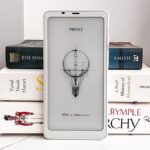- New rumors suggest we could see the Galaxy S25 Edge on April 16
- The phone could apparently then go on sale in May
- A new era of super-slim phones is upon us
Back on January 22, we saw three Samsung Galaxy S25 phones launched in full, but only got the briefest of looks at the Samsung Galaxy S25 Edge – and now we might know when that fourth model will finally be making its grand debut.
According to South Korean outlet Seoul Economic Daily (via @Jukanlosreve), we’re going to see the grand unveiling of the Galaxy S25 Edge on Wednesday, April 16, before sales start in May. Mark your diaries, calendars, or AI-powered digital assistants accordingly.
We get some more information from the report too: apparently the phone will be available in light blue, black, and silver, and will have a thickness of around 6.4mm – not bad in comparison to the 7.2mm of the standard Galaxy S25.
The phone is set to get a mid-range price, according to this source. As previously rumored, there’s also a mention of the same 200MP primary camera sensor of the Samsung Galaxy S25 Ultra, which will apparently be included in the Galaxy S25 Edge too.
Slim pickings
It’s unlikely to be a coincidence that we’re also hearing rumors of an iPhone 17 Air set to make its debut later this year. Super-slim smartphones could mark a new era of gadget innovation, if other phone and tablet makers follow this trend.
Previous leaks have put the thickness of the iPhone 17 Air at 6.3mm front-to-back, which means it could be even more streamlined than the Galaxy S25 Edge. None of this is confirmed until we actually get to see the phones, of course.
The competition with Apple is specifically mentioned in this new Seoul Economic Daily report: Samsung understandably wants to get out ahead of its rival, and grab some market share before the 2025 iPhones have a chance to respond.
In recent days we’ve also seen the unveiling of the thinnest foldable phone to date, just 4.21mm thick: see our Oppo Find N5 review for details. Sadly, that handset isn’t going to be on sale in many parts of the world, unlike the Samsung and Apple handsets.
Read the full article here













